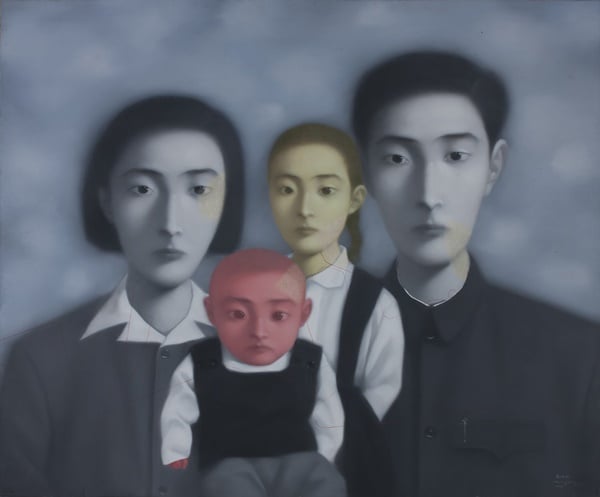
“M+ Sigg Collection: Four Decades of Chinese Contemporary Art.”
Photo: M+.
Swiss collector Uli Sigg, whose collection is the base for the current show, “M+ Sigg Collection: Four Decades of Chinese Contemporary Art,” at the M+ museum in West Kowloon, Hong Kong, penned a first-person account of his extensive collecting for CNN.
Sigg, the former Swiss ambassador to China, said it was business, not art, that first brought him to China in the late 1970s, when he was an employee of a Swiss elevator company.
In the wake of the death of Mao Zedong, the mood in China at the time was as one of “turbulence and disorientation,” said Sigg. Though he was eager to check out the art scene, unfortunately, what he saw back then “did not excite me.”
“Chinese artists had only just begun to free themselves from the forced constraints of socialist realism,” Sigg explained. The changes that he eventually saw taking place were more than a decade away. Sigg noted that after the Tiannamen Square protests of 1989, contemporary art took on “an increasingly political edge.”
Zhang Xiaogang Bloodline Series—Big Family No. 17-1998 (1998)
M+ Sigg Collection, Hong Kong (By donation)
Photo: Courtesy of the artist and West Kowloon Cultural District Authority
Having closely watched the development of Chinese contemporary art over the years, Sigg decided to do what no single collector or institution had done, systematically collecting works from the late 1970s onwards.
At its height, Sigg says the collection consisted of roughly 2,300 works, and he estimates he met about 2,000 artists over the years, most of which he bought from directly since there were no firmly established galleries as there are today.
The exhibit at M+ features 80 works by 50 artists including Ai Weiwei, Fang Lijun, Geng Jianyi, Huang Yong Ping, Zhang Peili, and Zhang Xiaogang. It marks the first-ever chronological exhibition about the emergence of Chinese contemporary art
“M+ Sigg Collection: Four Decades of Chinese Contemporary Art” is on view at the M+ museum in West Kowloon, Hong Kong, February 23–April 5, 2016.